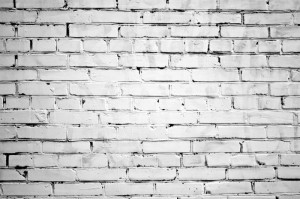Many homeowners view painting their masonry chimney as an easy way to update the look of their home. Others paint their chimneys in an attempt to reduce the amount of maintenance they need to perform by waterproofing the brick with paint. A few even paint their chimneys in the hopes that it will prevent existing damage from getting worse.
While some homeowners opt to paint their chimneys, others purchase homes where the bricks have been previously painted. This can affect the overall performance of the fireplace system, and homes with painted chimneys require special care and maintenance.
Maintenance of painted chimneys
Although all chimneys require regular maintenance, painted chimneys require additional care. First, painted brick chimneys need to be repainted more frequently than other exterior portions of the home. According to the Brick Industry Association, chimneys need to be repainted at least every three to five years.
It is also extremely important that painted chimneys are protected from exposure to moisture. Because of this, homeowners should pay special attention to the condition of their chimney crown and chimney cap. Having a properly fitting and well maintained chimney crown and chimney cap can prevent water damage to a painted chimney.
The chimney crown is a slab of concrete or metal that covers the top of the chimney. A proper chimney crown will have an overhang of about two inches on each side. This overhang keeps water off of the sides of the chimney, preventing water damage. Meanwhile, the chimney cap protects the entrance to the flue from moisture, debris, or animals from entering the chimney, flue, and firebox.
Moisture and painted chimneys
With siding, stucco, and other exterior finishes, paint is often used to protect the materials from water damage. While this rule is true for many exterior building materials, it is not true of brick. Rather than protecting the masonry from water damage, paint traps moisture inside of the normally porous brick.
“When water seeps in through the mortar, it also seeps into the brick through the inside, and since the bulk of the surface area is blocked, the moisture cannot evaporate off,” says Diana Zumeta of Brick Restoration. Trapped moisture will then expand and contract as the water freezes and thaws. Not only will this cause the paint to chip and peel, but it can also lead to brick damage that could possibly compromise the stability of the chimney structure.
Can paint be removed?
Although it is possible to remove paint from a chimney, it is often a long and difficult process. The most popular method involves the use of harsh chemicals which can sometimes damage the brick itself as the paint is removed. Unfortunately, in some cases the paint cannot be completely. Because of this, homeowners should think twice before painting their chimney as it often cannot be undone.
Before painting your chimney, contact Pristine Sweeps to assess the health of your chimney system. In many cases there is maintenance that can be completed before painting to ensure the chimney undergoes as little damage as possible. Likewise, if you have questions about how to maintain your painted chimney, contact the experts at Pristine Sweeps today!

